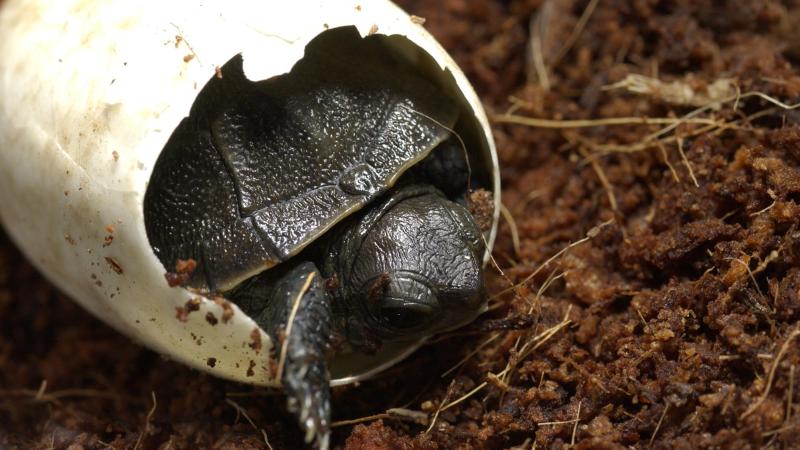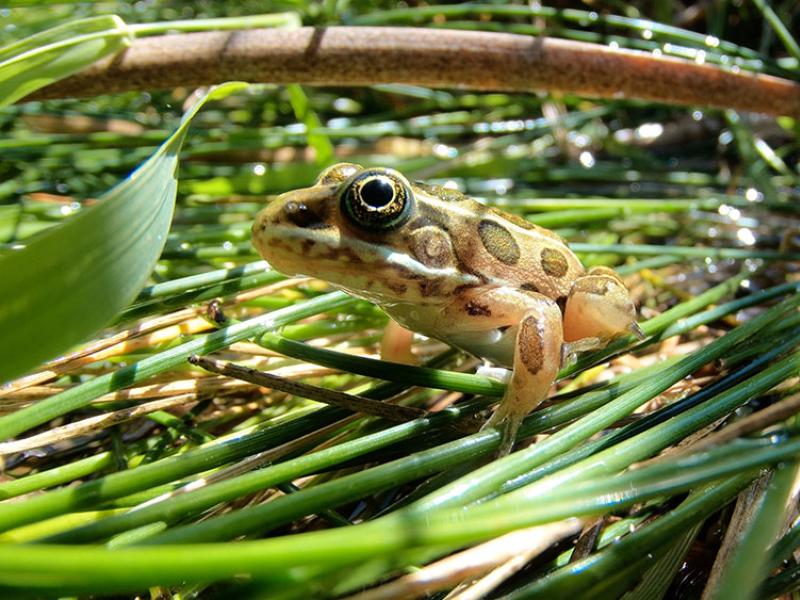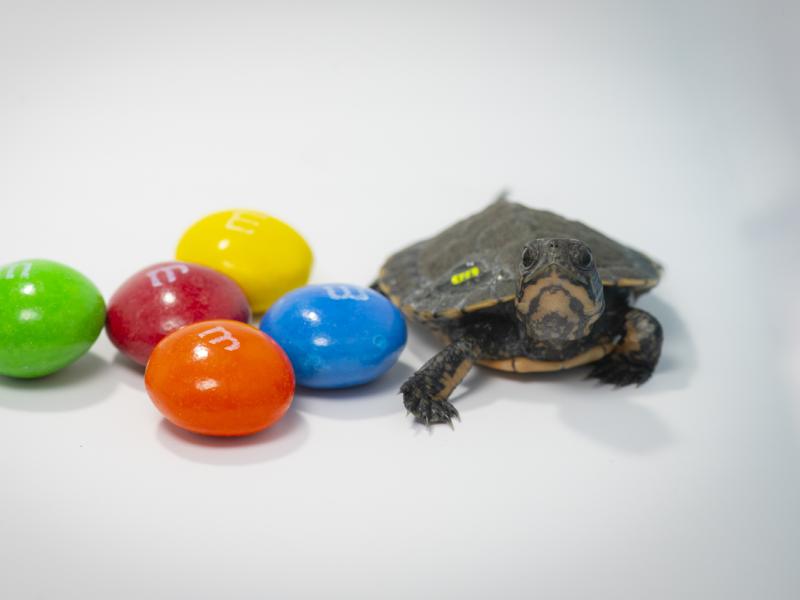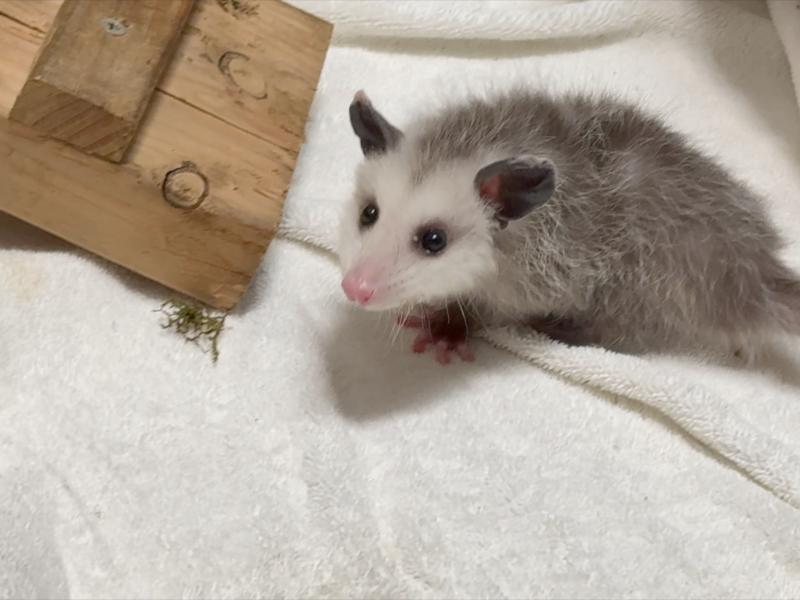Zoo welcomes 20 tiny turtle hatchlings

Endangered Northwest species gets a head start at the zoo's turtle conservation lab
The Oregon Zoo's conservation lab has 20 reasons to shell-ebrate this week as 20 baby western pond turtles settle into their new home. Smaller than a nickel, the hatchlings are extremely vulnerable to predators. To give them a fighting chance, the tiny turtles are collected from the wild and reared in the zoo's turtle conservation lab until they're big enough to go back to the pond.
"Baby turtles are really small when they hatch, so they're the perfect size for a lot of animals to eat," said Shelly Pettit, the zoo's senior keeper for reptiles and amphibians. "And the biggest problem they have right now are the invasive, or introduced, bullfrogs — they prey on turtle hatchlings right out of the nest."
Native to the eastern United States but considered invasive here, the American bullfrog is the largest frog species on the continent. It can tip the scales at more than a pound and has been driving pond turtles and a host of other small, vulnerable aquatic species to the brink of extinction.
Last week, Pettit and her colleagues helped Washington Fish and Wildlife collect 20 western pond turtle hatchlings from sites in the Columbia Gorge. The zoo is "head-starting" these tiny turtles, caring for them until next spring when they will be large enough to avoid the bullfrogs and have a fighting chance on their own in the wild.
Unlike recovery programs for other endangered species like California condors or Taylor's checkerspot butterflies — which take place offsite or behind the scenes — this conservation effort is easy to see. Oregon Zoo visitors can watch the small turtles as they grow inside the zoo's Nature Exploration Station.
The turtles experience summer year-round, with heat lamps and plentiful food, so they don't go into hibernation.
"We keep these little turtles warm, safe and well-fed in the lab," Pettit said. "As a result, they grow to about the size of a 3-year-old during the nine months that they stay with us."
Once the turtles reach about 50 grams (a little more than 2 ounces), they are returned to their natural habitat and monitored for safety.
The western pond turtle, once common from Baja California to the Puget Sound, is listed as an endangered species in Washington and a sensitive species in Oregon. Two decades ago, western pond turtles were on the verge of completely dying out in Washington, with fewer than 100 turtles left in the state. Since then, more than 1,500 zoo-head-started turtles have been released.
"We're at a critical point with this species," said Pettit. "We really have to grow them up in their population numbers if we're going to save them in time."
The Western Pond Turtle Recovery Project is a collaborative effort by the Oregon Zoo, Woodland Park Zoo, Washington Department of Fish and Wildlife, U.S. Fish and Wildlife Service, Bonneville Power Administration, U.S. Forest Service and other partners.
More News

A leap forward: Endangered frogs hit survival milestone
For the first time, zoo-reared northern leopard frogs survived a winter in the wild at the Columbia National Wildlife Refuge.June 12, 2025

Tiny Endangered Turtle Hatchlings Arrive At Zoo
Seventeen northwestern pond turtle hatchlings, each about the size of a walnut, are making themshellves at home at the Oregon Zoo this summer.June 4, 2025

Awesome opossum! Orphaned baby finds new home at zoo
A tiny opossum found wandering earlier this month has made his way to a new home at the Oregon Zoo.May 28, 2025

